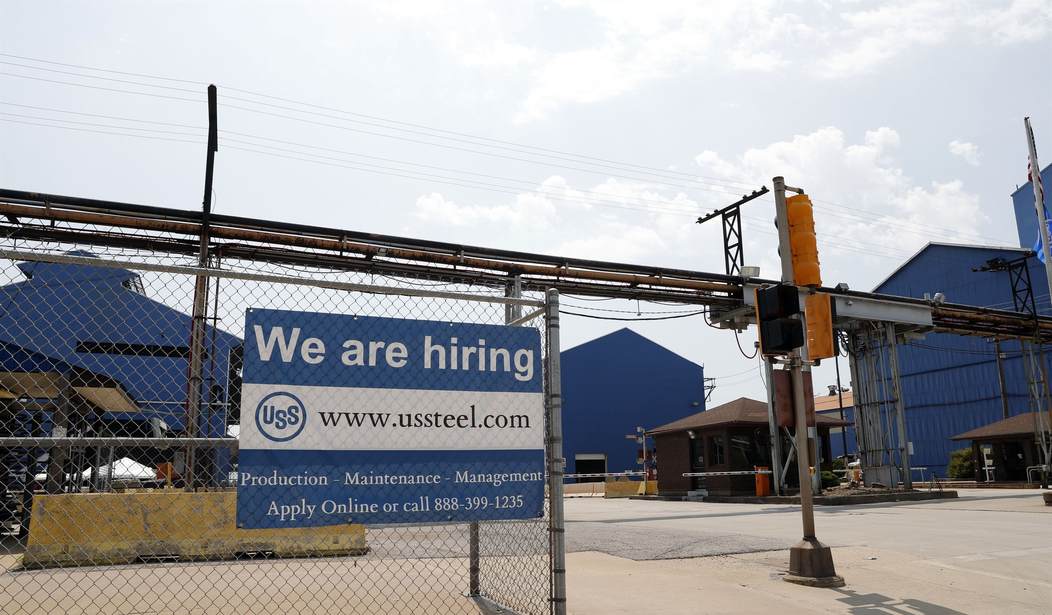Matt reported on the absolutely dismal job numbers in April. But the numbers only tell half the story. Indeed, with “Help Wanted” signs up all over the country and companies going to extraordinary lengths to fill positions, you have to ask, “What’s going on?”
The popular explanation is that Joe Biden’s massive stimulus bill makes it painless for workers to stay at home. That’s surely part of the problem. But there’s much more to it than that and some of the reasons point to a permanent change in the employment landscape.
But now, it’s a workers’ market. They can demand top dollar and negotiate better benefits like more flexible scheduling simply because so many are holding back from reentering the job market.
Surveys suggest why some can’t or won’t go back to work. Millions of adults say they aren’t working for fear of getting or spreading Covid-19. Businesses are reopening ahead of schools, leaving some parents without child care. Many people are receiving more in unemployment benefits than they would earn in the available jobs. Some who are out of work don’t have the skills needed for jobs that are available or are unwilling to switch to a new career.
“It’s a little shocking we’re at this point already,” said Steve Lucas, chief executive of iCIMS Inc., a cloud-based recruiting platform with 4,000 large firms such as Target Corp., CVS Health Corp., and Ford Motor Co. as customers. “Businesses are champing at the bit to grow and are moving faster than applicants are willing to move.”
Eventually, the fear of getting Covid will pass and schools will fully reopen. What then? It should go without saying that hundreds of thousands of businesses will never open their doors again — most of them small businesses that were the backbone of the labor force.
Consequently, there are fewer workers.
The country had 8.4 million fewer jobs in March 2021 than before the pandemic began, but not all those who lost jobs are seeking new ones. By March, nearly 4 million fewer people were in the labor force—Americans who hold jobs or are seeking work. That means millions who were displaced during the pandemic remain on the sidelines of the job market.
Hiring appears to be accelerating this spring, but the share of adults in the labor force has held nearly steady since last summer.
More than that, there are millions of people who discovered during the pandemic that they could do their jobs from home, leaving companies with expensive-to-maintain physical plants and workers who’d rather be at home with their kids. That may be one of the biggest changes due to the pandemic: more work being done from home. It was already a growing practice in several industries which has now been accelerated by necessity.
Fewer workers pursuing jobs at fewer businesses helps explain part of those atrocious April jobs numbers. But even those who wholeheartedly supported the extra unemployment benefits and stimulus payments are having second thoughts.
Adam Ozimek, chief economist at freelance platform Upwork, said he thought improved unemployment benefits were a wise policy earlier in the pandemic, but now sees problems. He said some of the hardest hit parts of the economy have been the slowest to bounce back, including restaurants, hotels and in-person service providers that face a shortage of workers and rising wage pressures.
“The benefits are a policy mistake that is going to hold back the recovery in the coming months,” he said. Dr. Ozimek, who described himself as a neoliberal economist, a philosophy that favors free markets and deregulation, said businesses that need to pay more to attract workers this summer will find it difficult to lower wages in the fall, when he said the labor market could loosen, once unemployment benefits expire.
A University of Chicago study found that 42% of those on extended unemployment receive more than they did in their prior jobs. With that kind of disincentive to work, it’s amazing we’ve had the job growth that we’ve had.
The pandemic was a shock to the system. It will take a few years before the dust settles and we can survey the employment landscape with any clarity. At that point, we’re bound to see vast changes in how America works and what kinds of jobs we have.










Join the conversation as a VIP Member